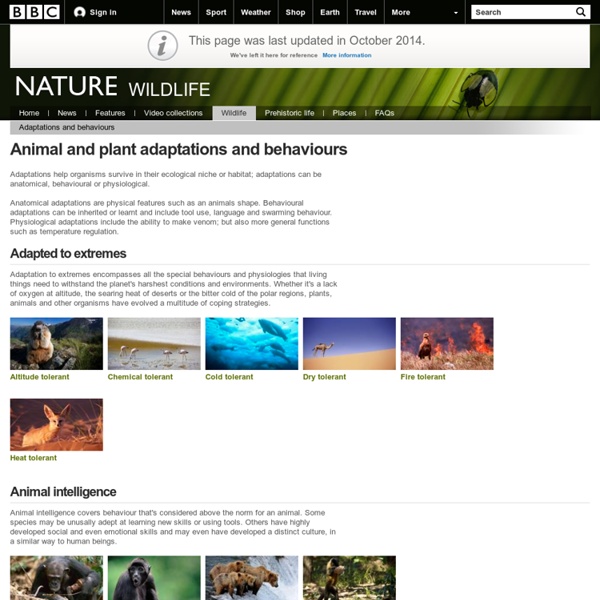



Evolution De tidigaste organismerna var encelliga och levde för tre och en halv miljarder år sedan. Alla organismer har genomgått en evolution och skillnaderna mellan dem beror på gradvisa anpassningar till olika livsmiljöer. Evolutionära förändringar har oftast lett till mer komplexa former men ibland har organismer förenklats, till exempel parasiter. Med evolutionsteorin kunde Charles Darwin förklara hur olika arter av växter och djur har förändrats och utvecklats sedan livet började på jorden. Av allt liv som funnits har 99,9% dött ut. Fem frågor om evolution 1. Nej. Individer ”strävar” inte medvetet att bli perfekt anpassade till sin miljö. 2. Nej, den gynnar de egenskaper som leder till flest avkommor. liten - om miljön är trångsnabb - för att komma undan rovdjurklara hög temperatur - om man lever i tropikerna Det avgörande är samspelet mellan egenskaperna och miljön och om det leder till stor eller liten fortplantning. 3. Nej, naturligt urval styr evolution tillsammans med slump. 5.
ARKive - Discover the world's most endangered species Wildscreen's Arkive project was launched in 2003 and grew to become the world's biggest encyclopaedia of life on Earth. With the help of over 7,000 of the world’s best wildlife filmmakers and photographers, conservationists and scientists, Arkive.org featured multi-media fact-files for more than 16,000 endangered species. Freely accessible to everyone, over half a million people every month, from over 200 countries, used Arkive to learn and discover the wonders of the natural world. Since 2013 Wildscreen was unable to raise sufficient funds from trusts, foundations, corporates and individual donors to support the year-round costs of keeping Arkive online. As a small conservation charity, Wildscreen eventually reached the point where it could no longer financially sustain the ongoing costs of keeping Arkive free and online or invest in its much needed development. Therefore, a very hard decision was made to take the www.arkive.org website offline in February 2019.
Galapagos: Livets början Galápagosöarnas unika växt- och djurliv fascinerade Charles Darwin innan han skrev sin bok om arternas uppkomst och dagens vetenskapsmän fortsätter att göra unika upptäckter när de utforskar ögruppens evolutionära historia. David Attenborough berättar historien om hur den lilla ögruppen mitt ute i Stilla havet skapades ur havet för fyra miljoner år sedan och utvecklade en fascinerande flora och fauna och endemiska djurarter. Här kan du skapa egna klipp ur programmet Hjälp Stäng 1. Se en film om hur man skapar klipp. DelaKopiera länken genom att trycka ctrl+C på PC eller cmd+C på Mac.
Arctic Unit Week 1 This was meant to be our first January unit, but lack of routine and school was getting to us so we went ahead and started a week early. First we looked for the Arctic Circle on our globe and talked about the different countries that make up the Arctic land. I pointed out the Arctic Ocean. (We haven’t really talked about the names of the oceans yet. Does anyone have a good song for that?) I printed out a few Arctic Animal Bingo and by printing the bingo ball cards twice we could play memory as well. because they gave concise information about each animal. I printed them out and paired the information card with my own Arctic animal nomenclature cards. I much prefer having real photographs of the animals. We have been reading lots of books about the Arctic and about polar bears. We talked about camouflage and why animals in the Arctic tend to be white. We experienced how blubber keeps a polar bear warm. I printed out an early reader from Enchanted Learning called How Many Arctic Animals.